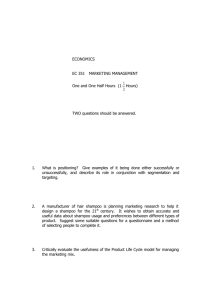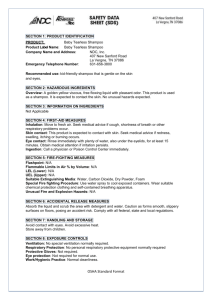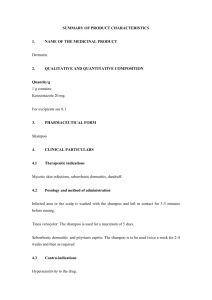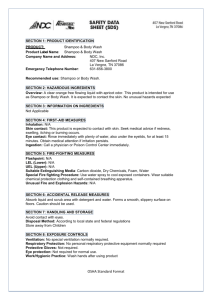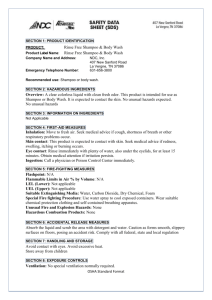Marketing Research Proposal
advertisement
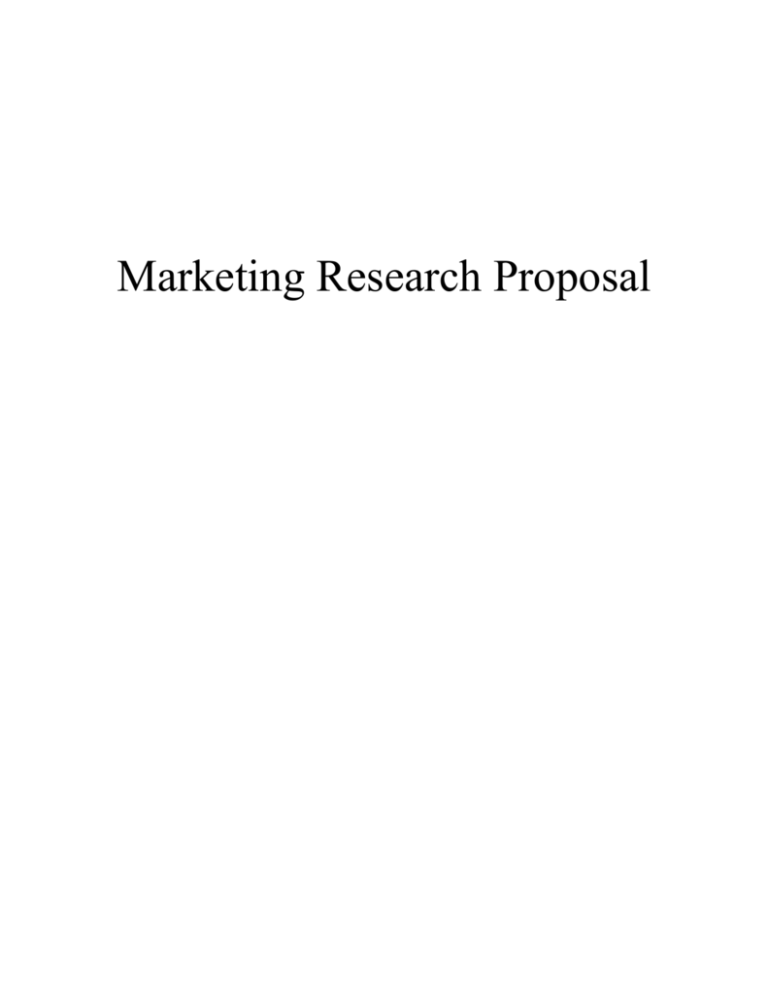
Marketing Research Proposal Introduction Procter and Gamble is the world's largest consumer products company, which has 23 brands with annual sales of $1 billion to more than $10 billion, and 14 with sales of $500 million to $1 billion. P&G’s brands vary from beauty and health to home and beyond. Among those, our research team focused on the brand Pantene which is under ‘Beauty, Hair, and Personal Care’ category. (Background information about client) Global shampoo market, as a leading segment of the hair care industry holding a 40% share of the market, it is estimated to reach $25.73 million by 2019. Within this significant profitable industry, Proctor and Gamble takes the leadership with 44.9% global market share. Meanwhile, their competitors Unilever takes 17.7% market share and L'Oréal with 11.4%. (General situation) In order to be outstanding in the competition, three major driving forces for hair care competitors are sought: new product innovation, online selling, and effective advertising. Among all these success-­‐leading elements, new product innovation is the foundation, which builds sustainable competitive advantages. In a bid to keep leading positions in the shampoo market, Proctor and Gamble introduces the new type of shampoo – dry shampoo. According to data tracking, In 2008, dry shampoo took 1 % of global shampoo launch activity, increases to 3% in 2012, and the number surpassed in 2013. Therefore, despite the fact that entire dry shampoo market share is low, clearly this industry has great potential to expand. (Recognizing opportunity) Research Objectives Even though dry shampoo market has great potential, current sales features vary in different region. Proctor and Gamble is the leading competitor in the dry shampoo market with 24% of the market value, in Europe market. Meanwhile, United Kingdom peaks at 23% quarterly. On the contrary, Mintel says United State consumer’s dry shampoo uptake remains relatively low as 16%. So obviously, compared to the increasing dry shampoo market share in EU and United Kingdom, US dry shampoo market share is relatively low. (Recognize the problem) To sum it up, P&G’s market share for dry shampoo remains relatively low in US compared with traditional hair care products. Thus, our team aims to figure out the reason why Pantene dry shampoo performs low in United States. (MDP) To define correct marketing research problem, we took situation analysis to understand environment related to P&G and associated constraints. Consumers who are looking for a quick beauty fix have helped the dry shampoo market double in size in the past two years. Unilever’s data shows that 83% of women in the U.S. skip a daily wash at least once a week; plus, Mintel’s research indicates 17% of women use dry shampoo when they don’t have time to wash their hair. Because of these large groups of people searching for convenient beauty product, dry shampoo sales have rocketed by 140% year on year. According to Mintel, dry shampoo is especially popular among younger women, with nearly 4 in 10 of those aged 16 to 24, compared to 1 in 10 of the over-55's, predicting that dry shampoo sales will reach up to £17million this year. This collected data potentially indicates that dry shampoo products are more appealing to younger generation than it is to a mature customer group. What Mintel also finds is that 23% of women and 13% of men own a bottle of dry shampoo, which tells the trends in potential consumer demographic that female consumer is going to surpass male consumer in the dry shampoo market. In conclusion, the most crucial target market for Pantene dry shampoo is female groups who are aged from 16 to 24. (Understand the decision-making environment: target market) Besides the easy-use and time-saver traits, dry shampoo also takes several additional qualities, which lead to success. First of all, positioning. Instead of the traditional function of shampoo as a personal hair care and hygiene product, dry shampoo is developed and marketed as a time-efficient hair styling product, which goes beyond the ways and functions that traditional shampoo provides and better satisfies customer needs. Secondly, the wide range of the segmentation is also a key in the dry shampoo industry. To target at customers with various needs, company correspondingly launched dry shampoo products with functions of fragrance, color-protection and additional styling. Product line had also extends to dry conditioner lately, in order to win the market by adding benefits to the basic shampoo functions. (Understand the decision-making environment: industry and products) Considering these characteristics of dry shampoo environment, our team decided to collect U.S consumer’s review for Pantene dry shampoo through various websites. We collected data from online market of Target, Amazon, Walmart, and Pantene’s official website. To compare consumer’s opinion toward other main competitors, we also collected review for Garnier Fructis Volume Extend Instant Bodifier, Batiste dry shampoo, and Dove dry shampoo from Unilever. We categorized consumer’s review by price, scent, function, and packing. If consumer complains about the way the product works we classified the opinion as function problem. (Use the symptoms to help clarify the problem) (Should write down in detail based on excel data) In summary, we conducted exploratory research through Internet to figure out what are underlying causes of our symptom which is relatively low performance of Pantene dry shampoo in United States. By analyzing consumer reviews, we found that … (Translate the management problem into a marketing research problem)
